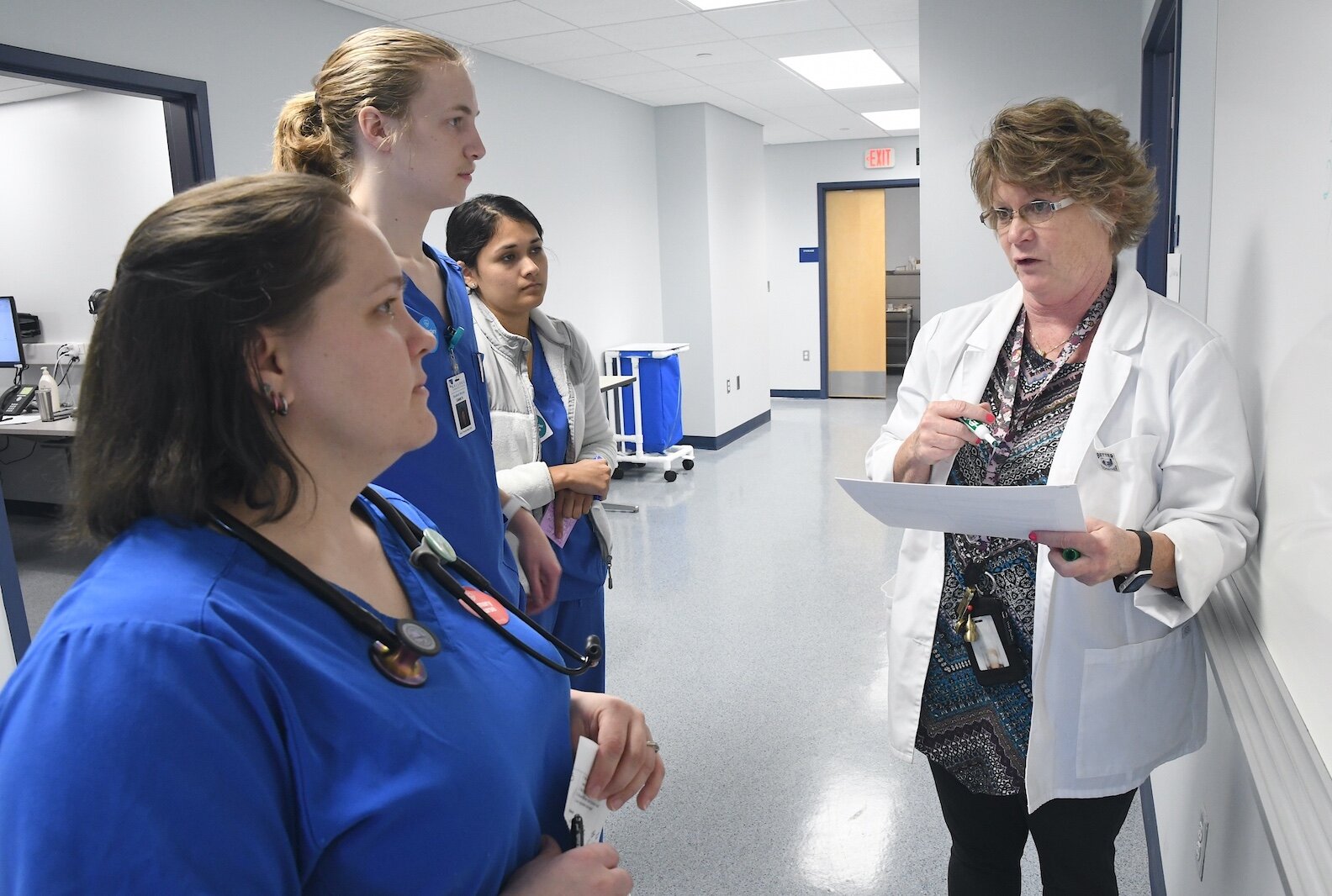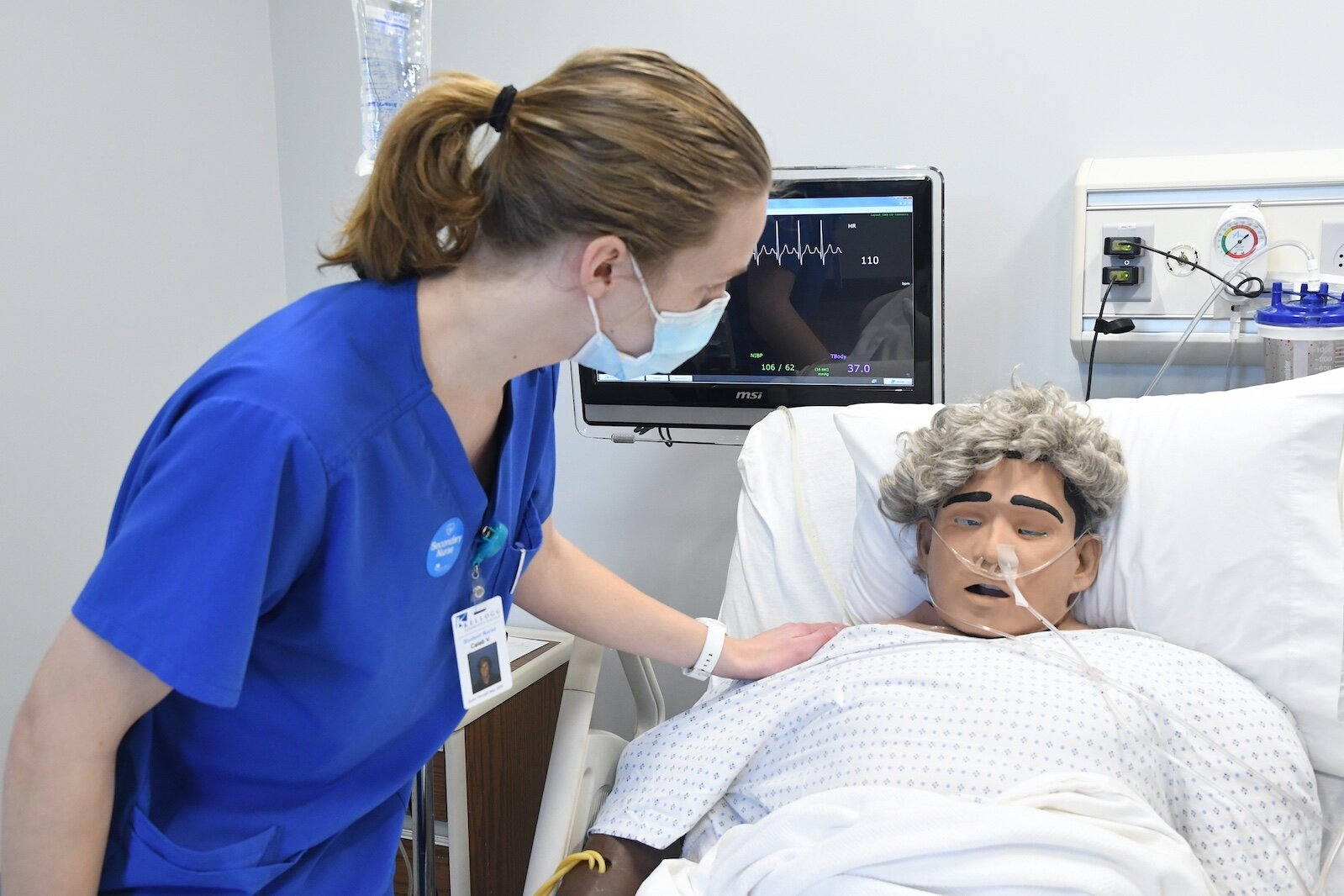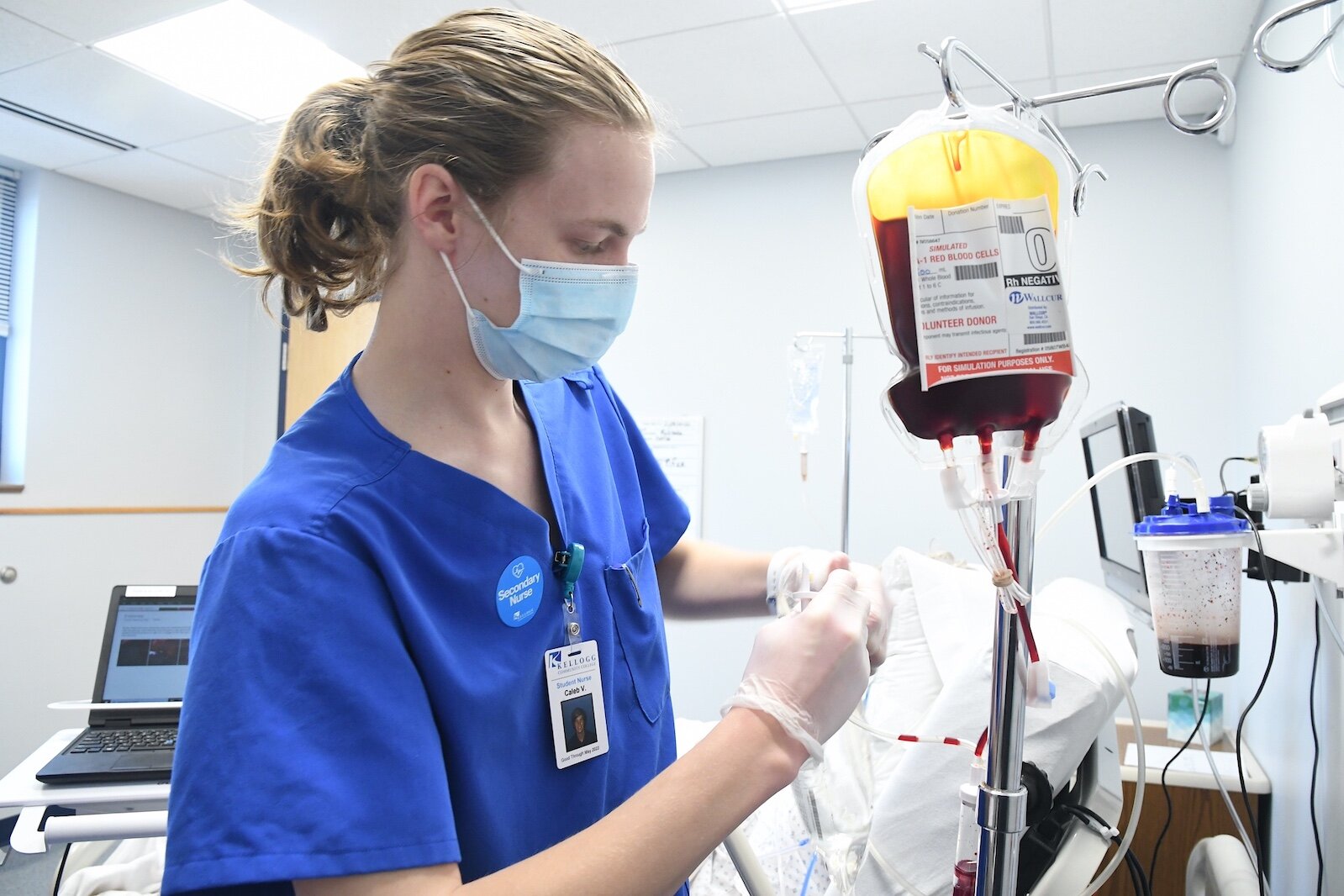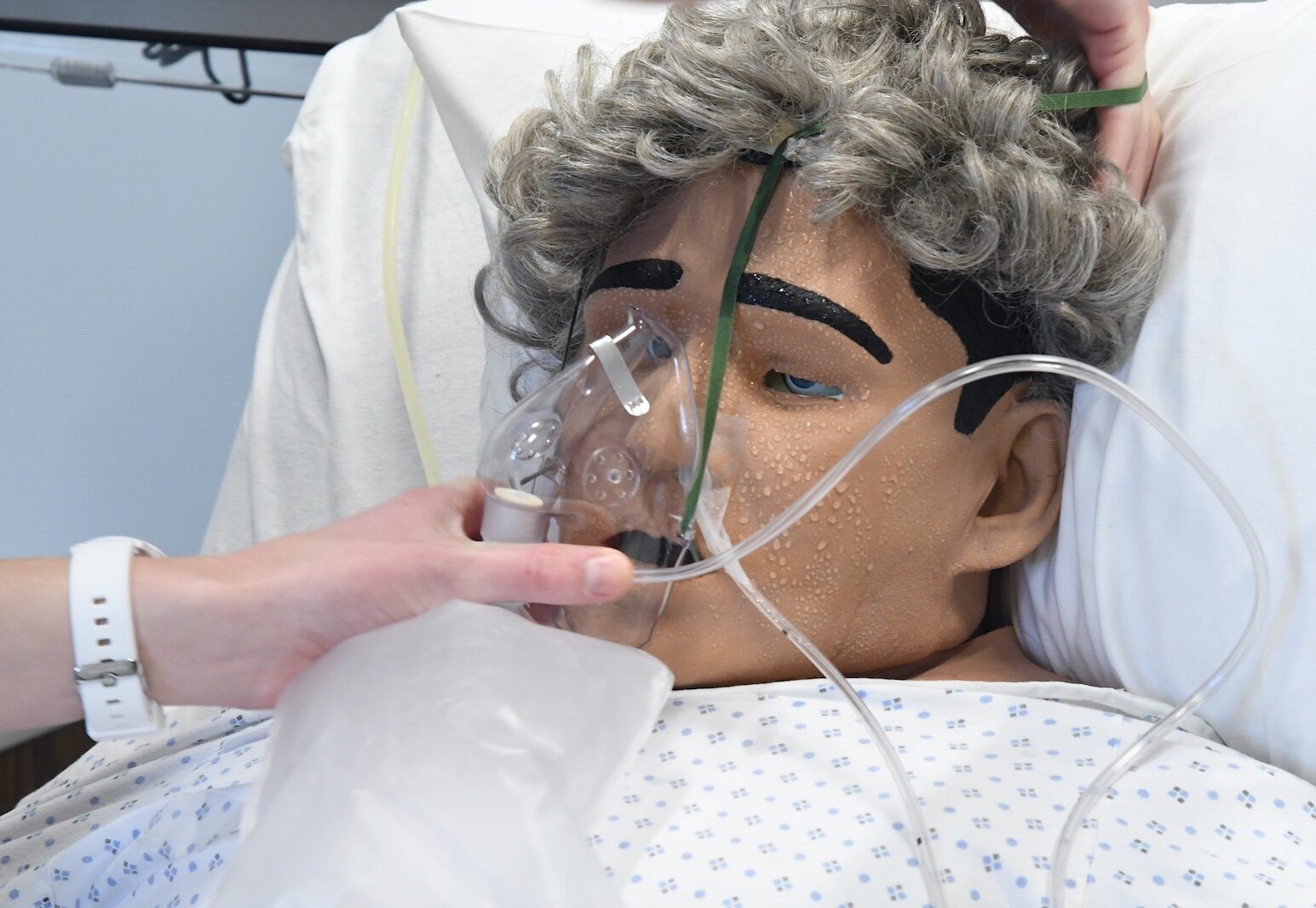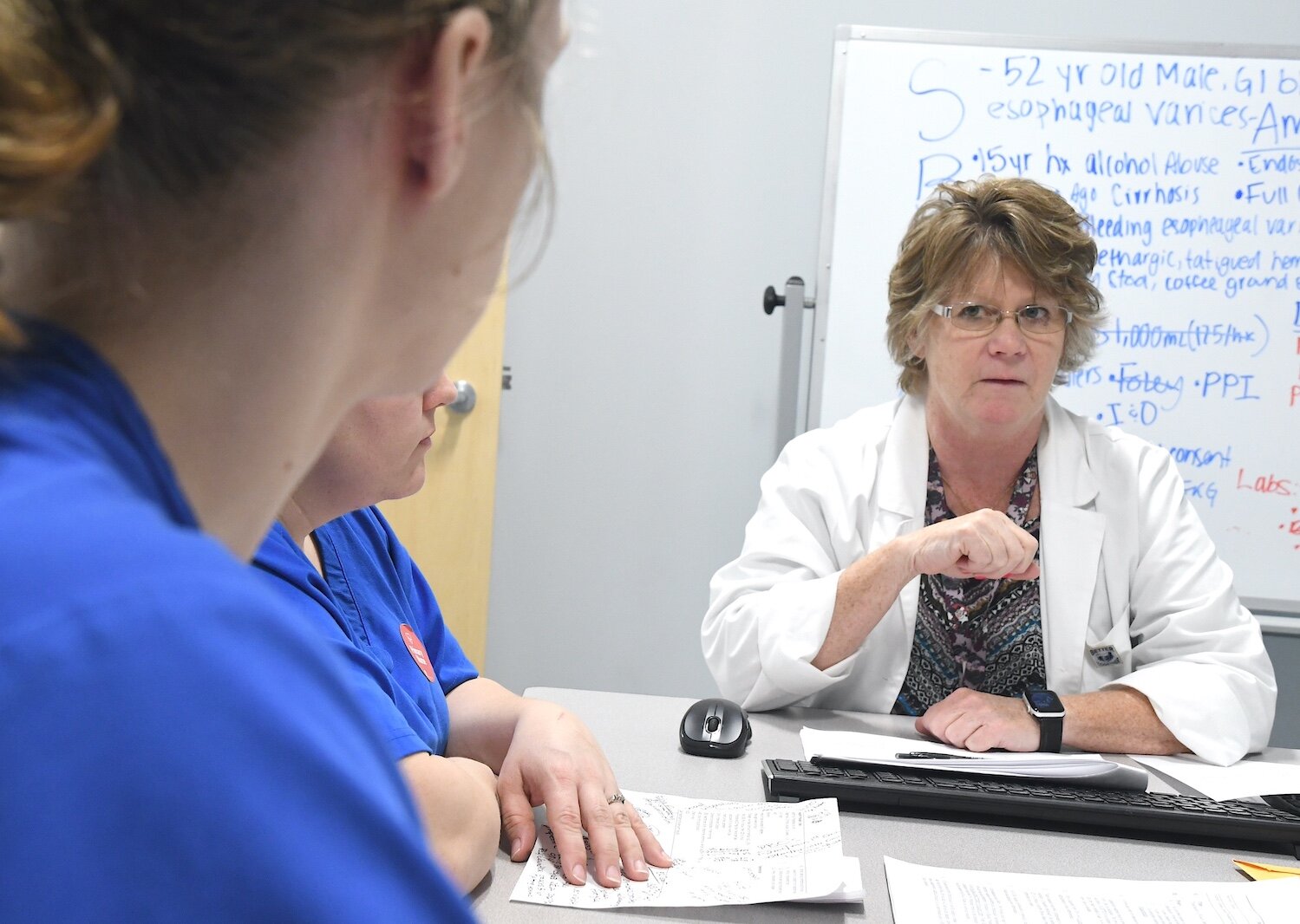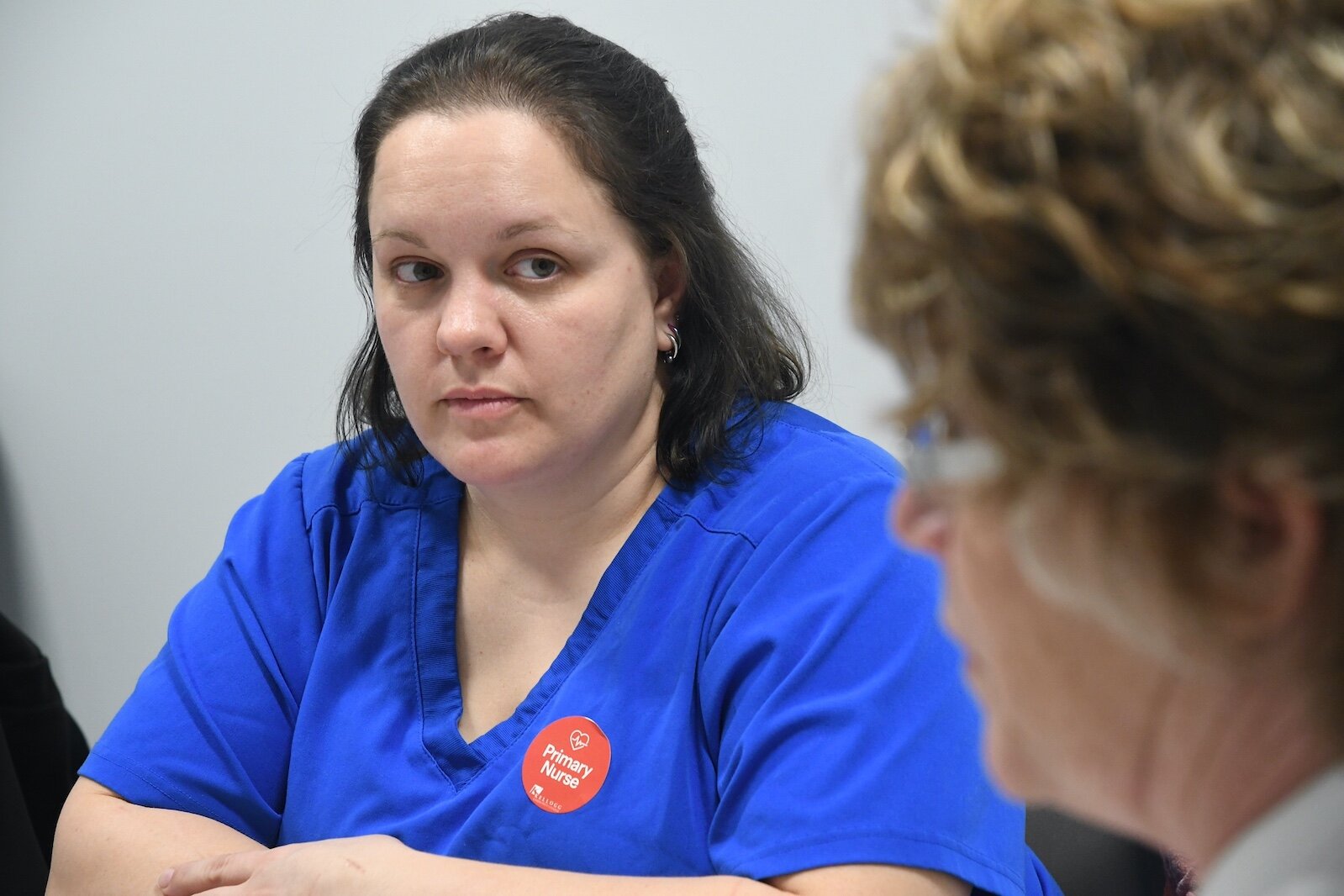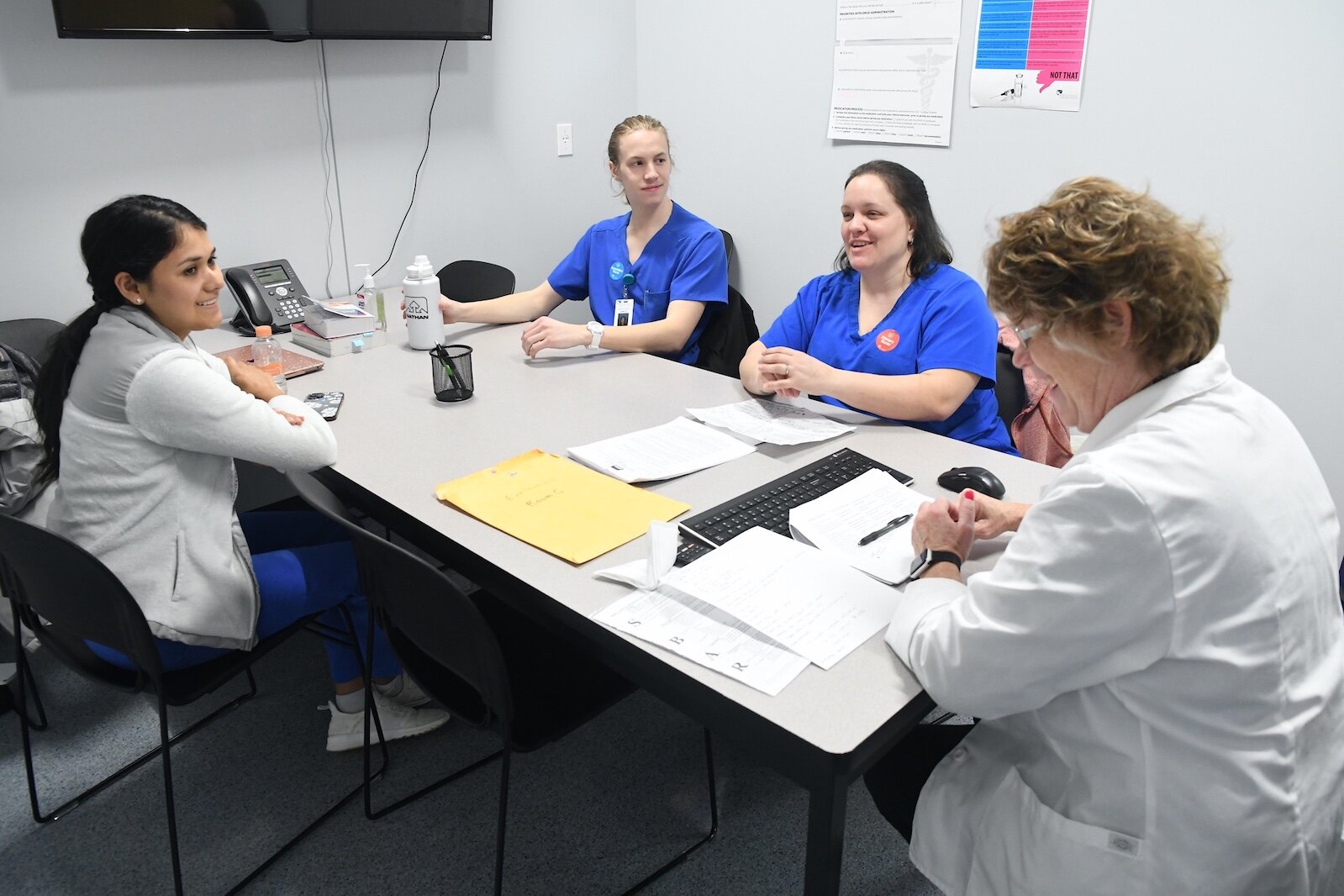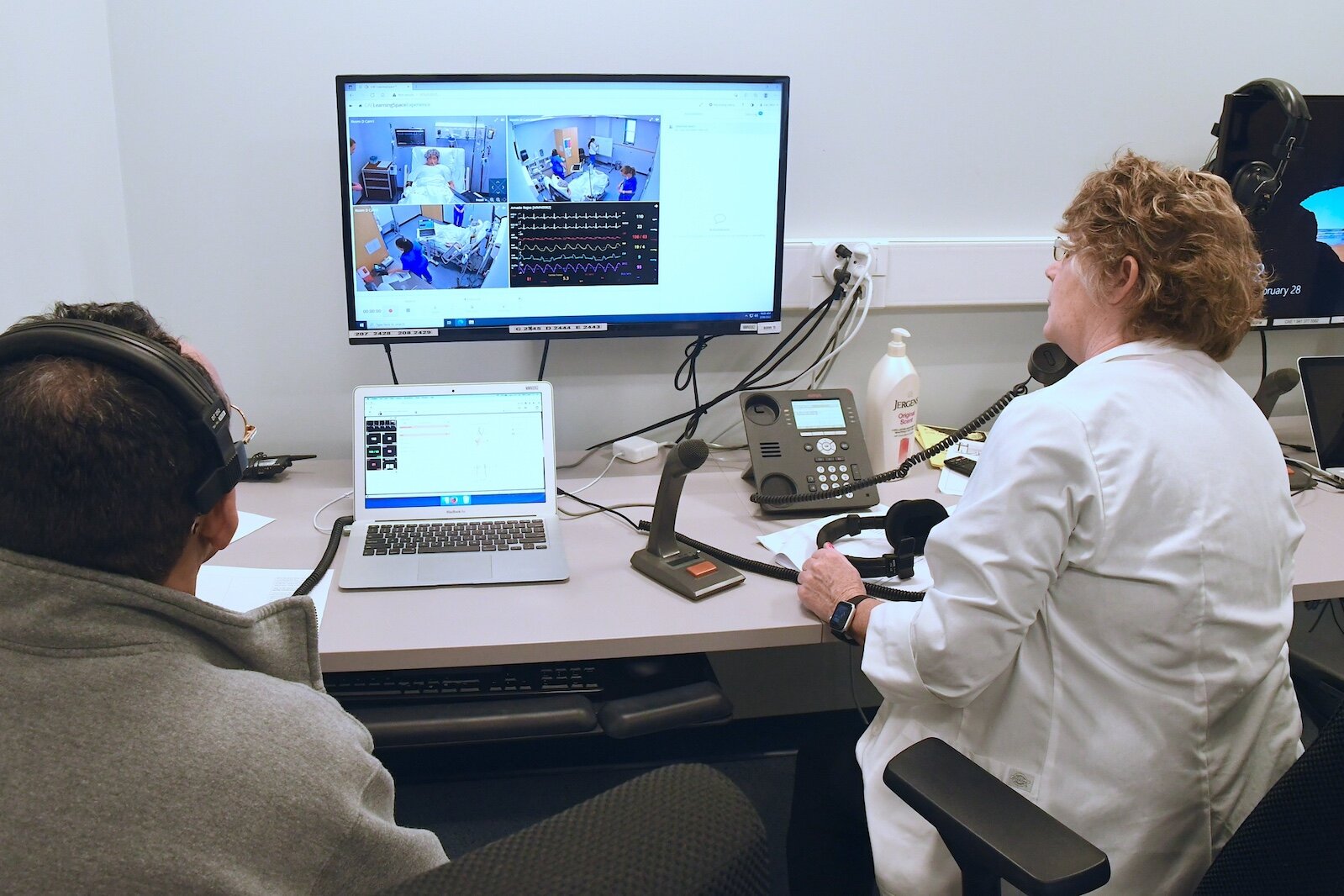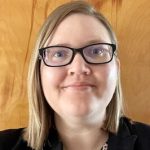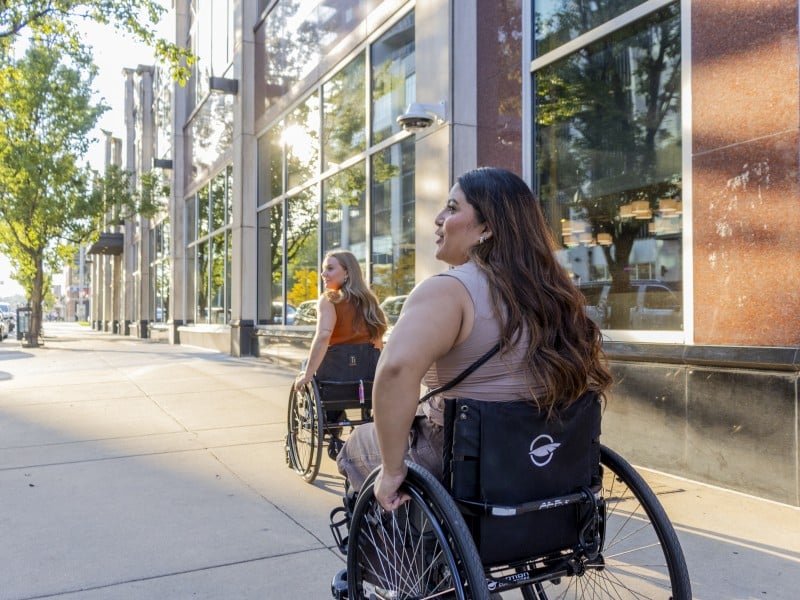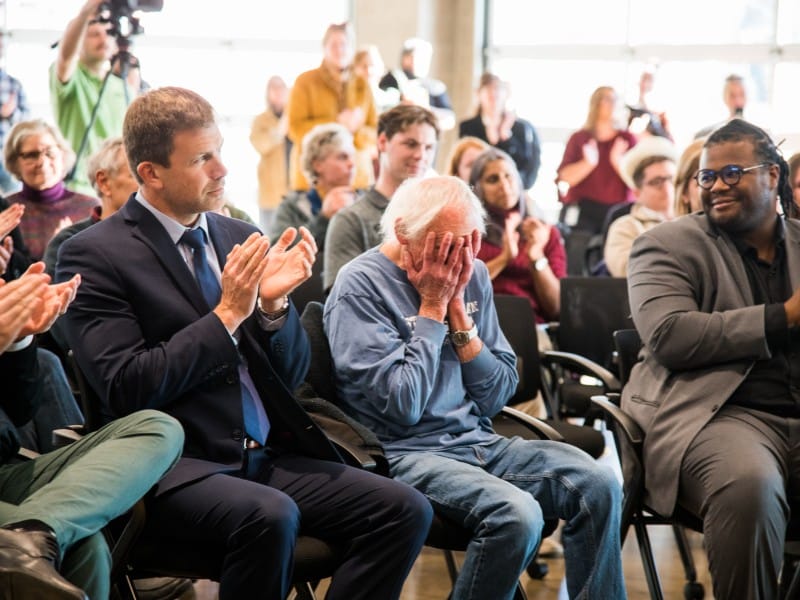Simulations with lifelike mannequins have increased.
Editor’s note: This story is part of a Southwest Michigan Second Wave series exploring issues surrounding COVID-19 in Calhoun county.
Nurses were hailed as heroes at the beginning of the pandemic, but even heroes have a breaking point.
According to NPR, 20% of healthcare workers have quit since 2020.
“Nurses that had a lot to teach us, they hung up their hats, turned in their badges,” says Stormie Munoz, a registered nurse at Bronson Battle Creek.
Already facing a shortage before the pandemic, healthcare workers are in high demand. Sign-on bonuses have reached $20,000.
The next generation is coming, and they’re receiving training through schools such as Kellogg Community College.
Nursing has been a part of KCC from the early days: The first graduating class was in 1962.

Since then, career pathways in radiology, dental hygiene, emergency medical, and more have been added.
But like everything else, the KCC program has been affected by the pandemic.
“It’s changed the canvas,” says Elizabeth Fluty, director of nursing education.
Changing rules
When Chris VandenBerg flipped through a KCC catalog 20 years ago, radiology caught her eye. She could have a career in healthcare while avoiding bodily fluids.
VandenBerg got her degree, worked out in the field, and now is director of allied health for her alma mater.
She’s seen a lot of changes, although maybe not any as swift and newsworthy as what’s happened in healthcare over the past couple of years.
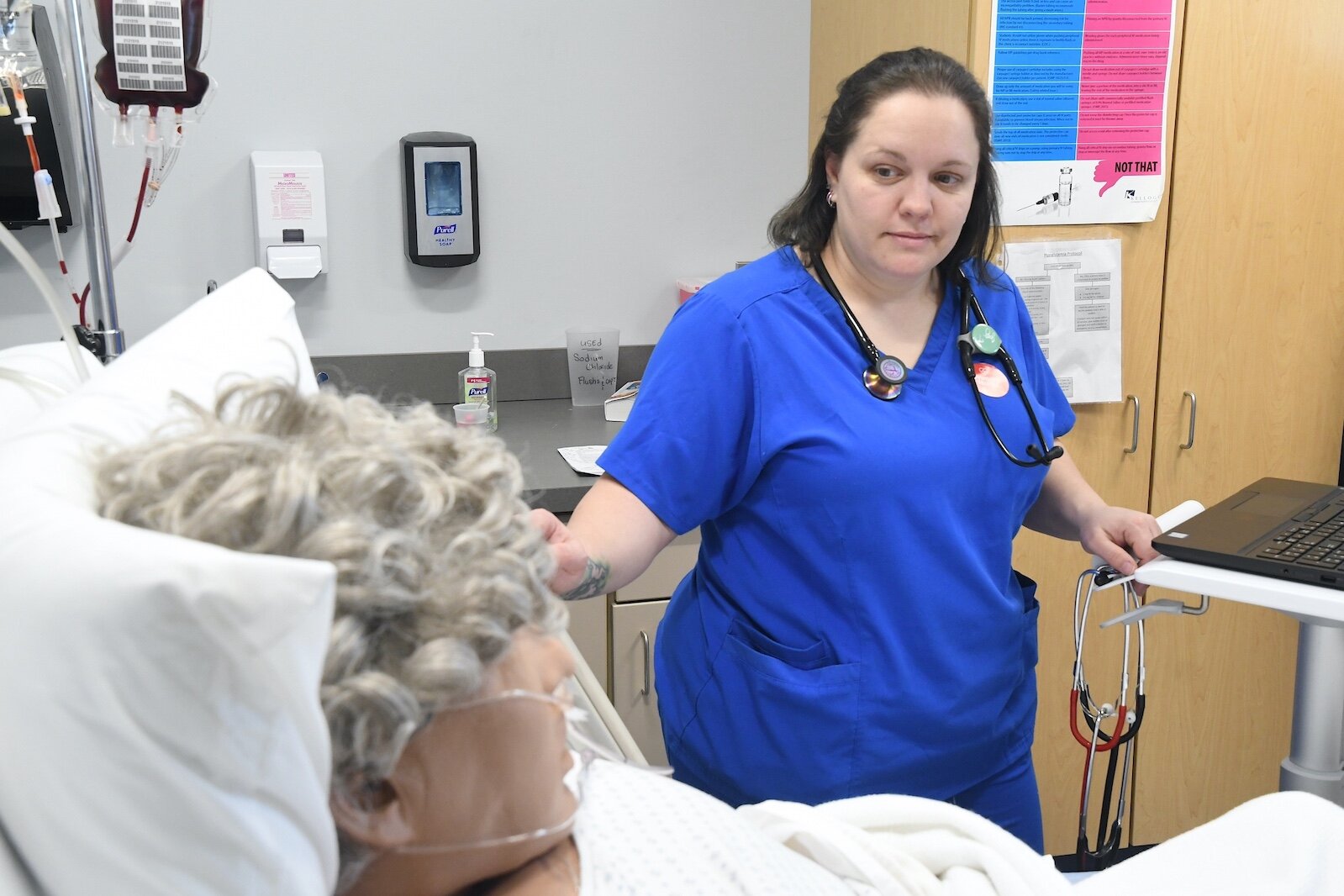
“Students have to be aware of it in healthcare, that this is ongoing,” VandenBerg says. “What is the next bad thing that hits us and what are the requirements going to be?”
Nothing tested that philosophy as much as COVID-19, which has been one long, constantly changing challenge.
On-site experience for students requires they meet the preventative requirements of each clinical setting. To protect themselves and patients, they’re required to be up-to-date on what VandenBerg colorfully described as “a boatload of vaccines.” Those can include shots and testing for flu, mumps, chickenpox, TB, and recreational drugs. The KCC instructors are very clear, right from orientation, that there will be health requirements.
But with trying to prevent the spread of COVID-19, the rules kept changing.
“That was the whole thing, we started having the conversation with students,” VandenBerg says.
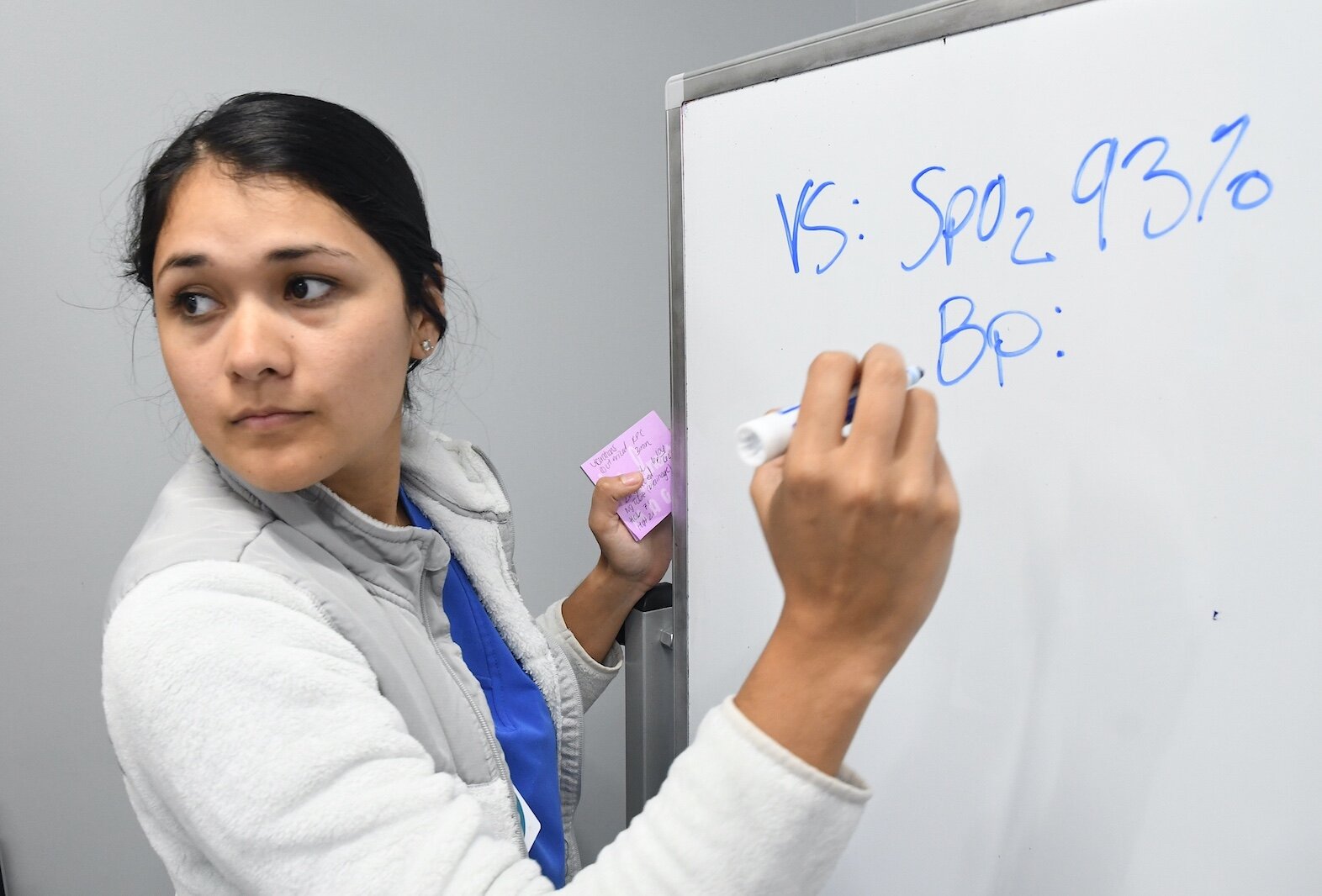
Then came the approval of the COVID-19 vaccine. When hospitals started adding it to their list of requirements, it became a political bone of contention.
“Being in healthcare comes with trying to keep the employees safe. Having this additional request now, with the COVID shot, isn’t a surprise,” VandenBerg says.
Both VandenBerg and Fluty have had students walk away because of the COVID-19 vaccine.
Fluty estimated that out of 400 nursing students, about 6% have gone unvaccinated.
“Those students that didn’t want to get vaccinated either decided they didn’t want to go into the health field, or they seek a clinical site that will grant them an exemption,” she says.
The classroom of the future
Stormie Munoz graduated from KCC in 2019, not knowing she was about to be thrown into the kind of pandemic that she had only read about in history books.
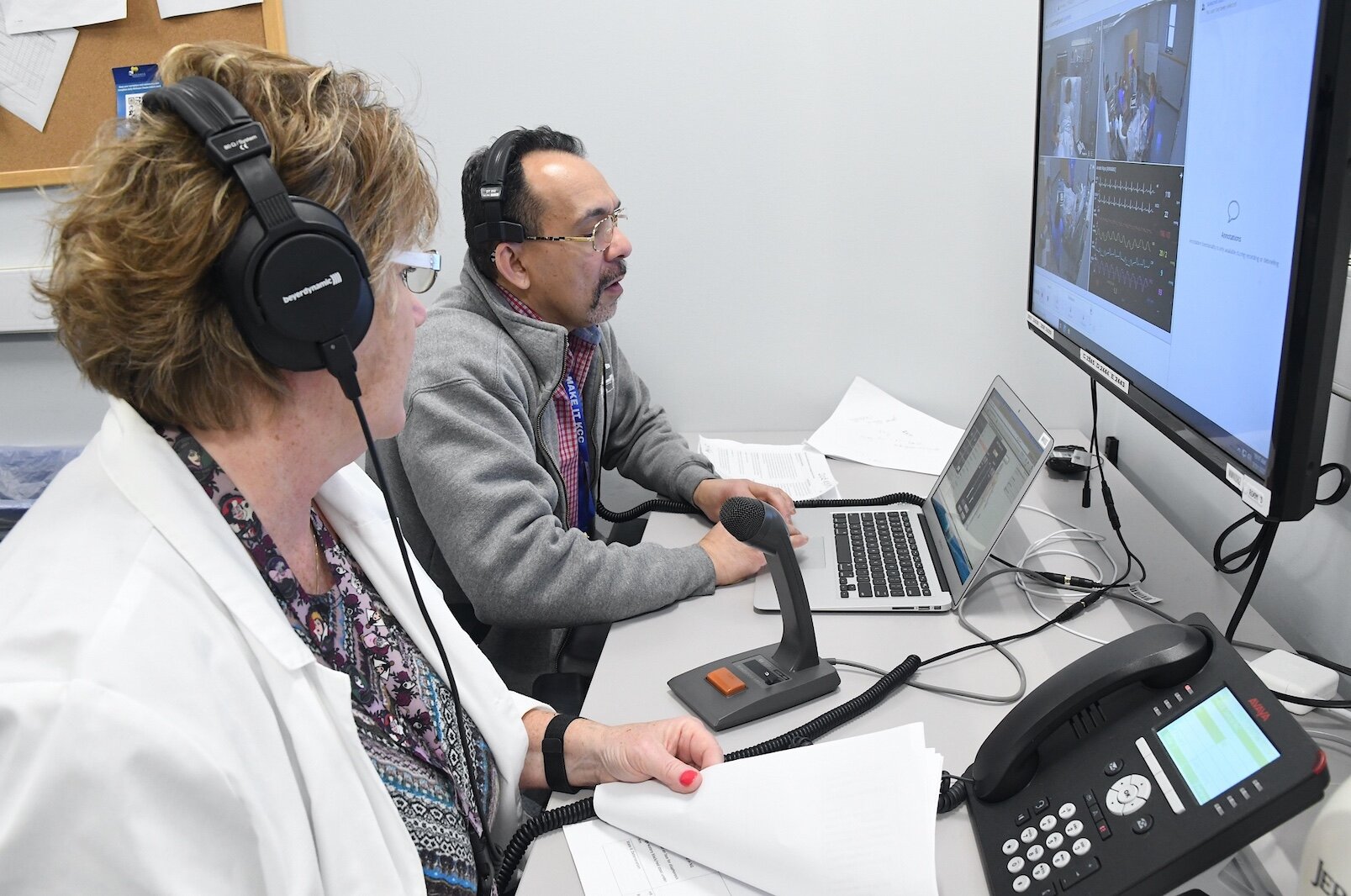
Now she works at Bronson and offers clinical instruction to new students at KCC.
“I absolutely love the program,” Munoz says. “It’s tough but it’s worth it.”
Students in 2020 had an unusual set of obstacles to their learning. School became online-only and there was a gap for in-person clinical training.
VandenBerg says they had to get creative. For instructors, there was a lot of growth as they learned how to think outside of the box when it came to lessons.
Simulations with lifelike mannequins have increased – the mannequins have real heart and lung sounds, they can blink, and can “give birth” from a womb.
With the help of technology, instructors can keep classrooms at 50-50, with half the class getting instruction at KCC and the other half involved online.
“It promoted change in the future for how we teach,” Fluty says.
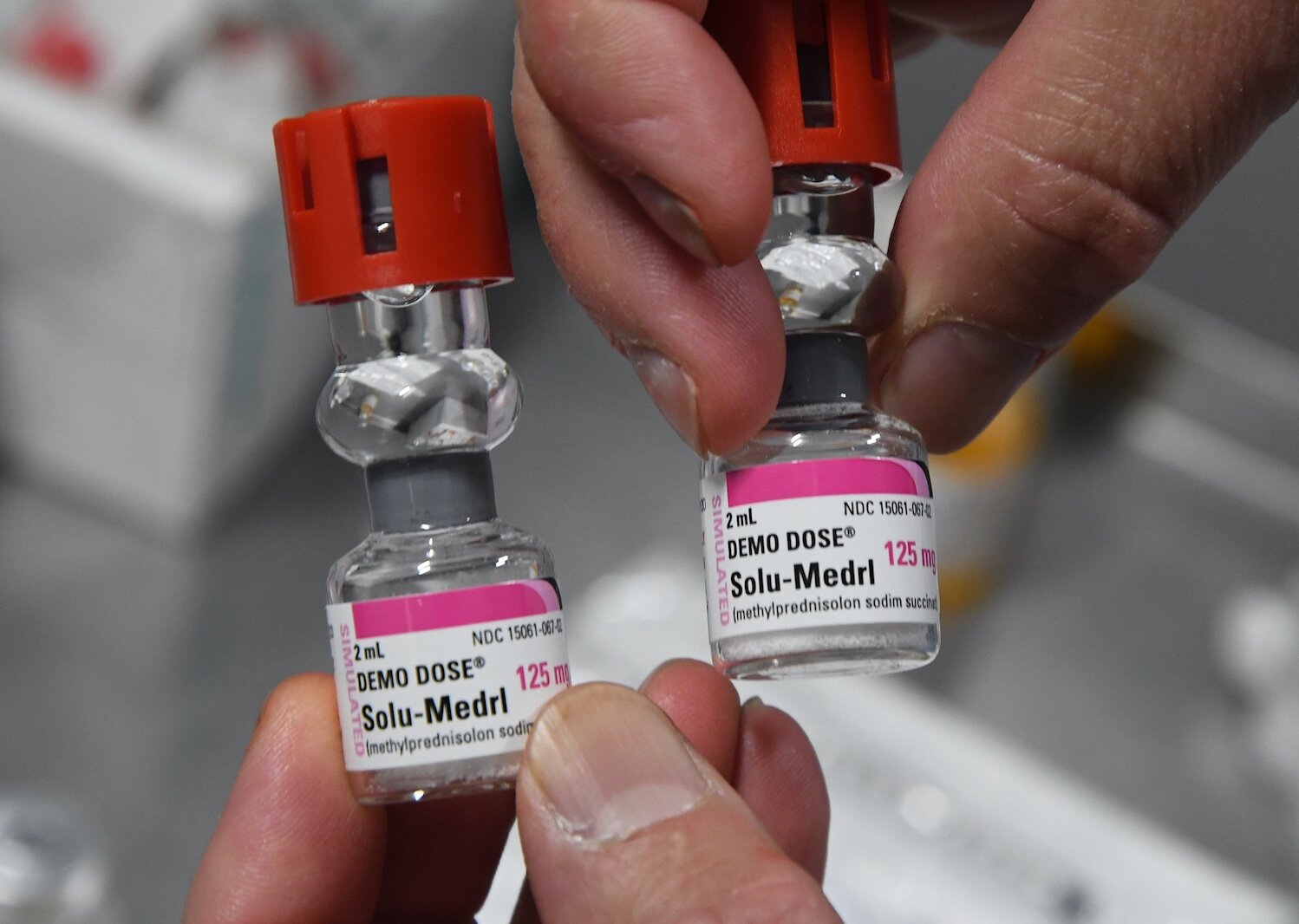
The board scores for KCC students have remained above 80, while there are schools in other states that have dipped down to 60. It’s a testament to the ingenuity of the KCC staff.
The Calling
VandenBurg worked at a hospital for 25 years and still has many friends in the field. “Overall, these last couple years have been horrific for them,” she says.
Not only are medical centers understaffed, but a lot of times they were missing the support in care usually provided by families of patients.
Munoz recalls not having enough beds for all of the patients arriving at the hospital.
“You’re working long hours, you don’t have the help,” she says. But the situation may be turning around. “It’s getting better.”
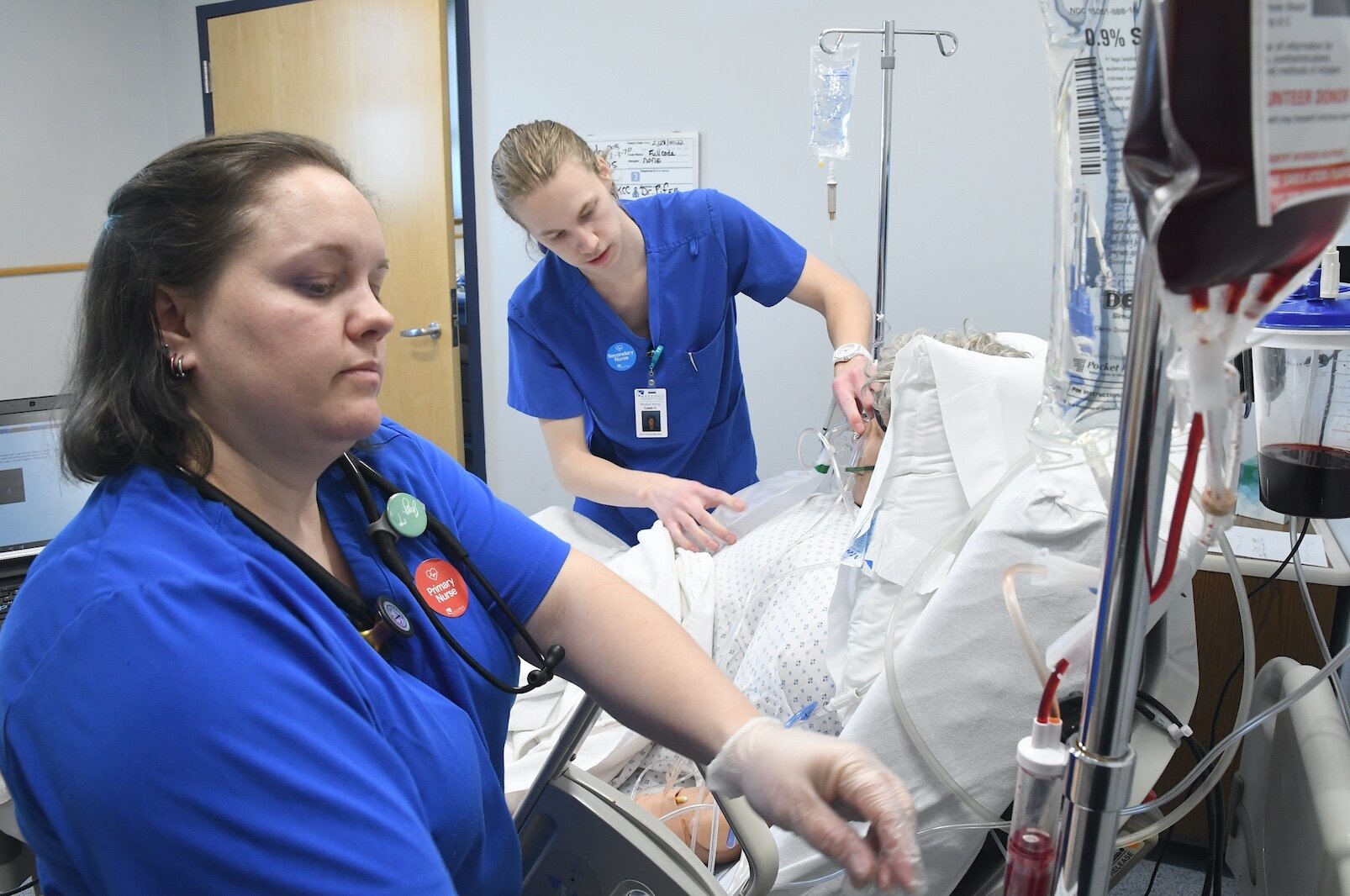
It’s being unable to properly care for patients that can drive nurses out of the hospital. Fluty recalls a time a patient asked her for water and it wasn’t until she got home 12 hours later when she remembered she had never got him the water.
“That’s not what I went into nursing for, and it does take a toll on you,” she says.
So why do it? Why do people continue to sign up for healthcare careers at KCC?
“The ones that I see going in, that’s what they have their hearts set on,” VandenBurg says. “There’s something, there’s a passion, there’s a connection to whatever they may have experienced.”
“A calling,” Fluty says.
The pride for their student’s enthusiasm was obvious. And there are those who are advocating to make nursing better for everyone.
Munoz is joining her mentor at the United Nurses March in Washington, D.C., on May 12. She’s going to be pushing for ways to create a more manageable patient ratio and a pay change. The rise in workload has not been reflected in pay, Munoz says.
Munoz came to nursing late in life. She had applied to KCC a couple of times but always talked herself out of it.
“I actually was scared, to be honest. I didn’t know if I could handle blood or IVs,” Munoz says.
Once she put herself out there, though, she found she could overcome anything. That’s what she wants current and future healthcare students to know: They’re going to surprise themselves with what they can do.
“Anything’s possible,” Munoz says. “I’m passionate about what I do, I made the right choice, just make sure you’re delivering patient-centered care. Make the biggest impact you can in the 12-hour shift you have.”

